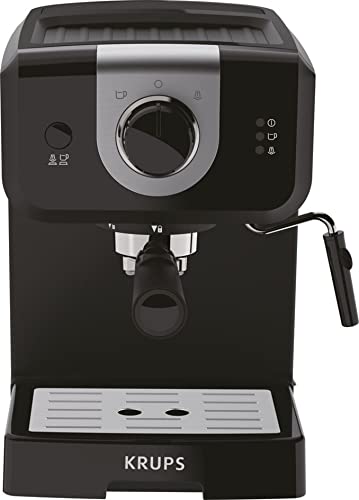How to Make Espresso Machine Coffee
An espresso machine can make an excellent cup of coffee, however it requires some more set-up and upkeep than a regular drip coffee maker. You'll also need to grind and tamp the beans by yourself.
The secret to making espresso is pressure. What happens in an espresso machine is that a heating vessel heats the water to the right temperature, then it forces it out of the spouts and through the grounds.
Temperature
Espresso is made by forcing hot water under pressure through finely ground coffee beans. The temperature of water is vital to the final shot. Insufficient temperatures cause absence of flavor compounds. High temperatures can cause over extraction, which can cause bitter or burnt taste.
The ideal temperature for espresso is between 195 and 205 degrees Fahrenheit. This temperature can be achieved by using a grouphead that is designed to ensure an even temperature and stability throughout the brewing process. The most well-known type of group head is the E61 that provides the stability of temperature and pre-infusion capability, as well as lever control.
When altering the espresso machine for different roasts and brew ratios it is crucial to take into consideration the effect of temperature on extraction yield as well as crema. The ideal temperature will differ according to the bean and roast. However generally speaking, it is believed that lighter roasts with higher brew rates need higher temperatures. A reliable thermocouple is vital to maintain the same temperature.
Pressure
During the brewing procedure espresso machine coffee is pushed under pressure through finely ground coffee grounds that have been tamped. This causes chemical reactions which extract flavors, oils, and other soluble ingredients. The resulting beverage is typically more flavorful and richer than regular coffee.
The ideal espresso machine pressure should be nine bar that's equivalent to sea-level pressure. The soluble components in the espresso bean can be best extracted at this pressure.
Some espresso machines boast up to 20 bars of pressure. Although these machines can attain these levels of pressure however, they may not be in a position to maintain the same pressure throughout the extraction.
One bar of pressure is equal to 32 pounds per square inch (PSI) of a car's tire. It's also more than four times the pressure a professional cyclist uses when pumping up their bicycle tires. The ability to control the espresso machine's pressure and produce consistent espressos is essential for any serious barista at home.
Water
Water is a key ingredient in a good cup of espresso. The correct water can help your beans to extract their maximum potential. However the wrong water can cause issues like clogging pipes and damage to your expensive machine.
For the best espresso extraction, you should choose the natural spring that has a high mineral content. This water will enhance the flavor of your coffee without the chalky mineral trace that comes from tap or bottled waters. This is an excellent alternative to distilled water or reverse osmosis, which could be too filtered and cause flavor problems.
But, you shouldn't use filters that remove excessive minerals from your tap water as this can also cause extraction and flavor issues. Buy a water testing kit to determine the average hardness of your water at the local level. This can then be used to identify an filtration system that can give you the correct water specs for your espresso machine.

Beans
Many coffee enthusiasts get very involved with the whole process of making espresso. They obsess over a number of variables, such as temperature, water pressure beans, milk, viscosity and other aspects. If one of these variables is slightly off, the whole shot might taste bad.
The most important factor when it comes to espresso is the beans used. Many people believe that only certain varieties are suitable for espresso. While certain beans are suitable for certain uses, any roasted coffee bean can be used to make espresso. The difference between espresso beans and regular coffee beans is that espresso beans are roasted for longer, tipycally past the second crack and give them an appearance darker and makes them more water-soluble.
Medium or dark roasted beans are the best for espresso, as they give the espresso a richness and boldness. But, it's possible to make great espresso with light roasted beans, particularly when the beans are pre-ground (for convenience in the espresso machine).
Milk
Espresso and milk are a traditional combination. espresso machines www.coffeee.uk of espresso and milk is an old-fashioned. It does not only boost energy however, it also balances the bitterness of espresso. There aren't many culinary pairings more perfect than this!
When selecting an espresso maker capable of making latte or cappuccino too, you should consider how easy it will be to use. Many of the best espresso machines have an ice jug that can be filled with hot or cold milk as well as a steam wand, and a portafilter that allows you to take the shot. Certain models have an integrated grinder, tamper and frother.
To eliminate any condensed water the steam wand should be purged each day before use (or after every cup of espresso). This process can take about 30 seconds, and is necessary to ensure your machine is running smoothly. Failure to purge can result in an unpleasant taste or the build-up of bacteria that could alter the flavor and aroma of your drinks. It's simple to do and should be a part of your regular maintenance routine.
